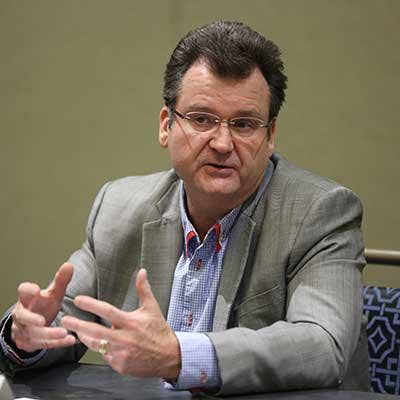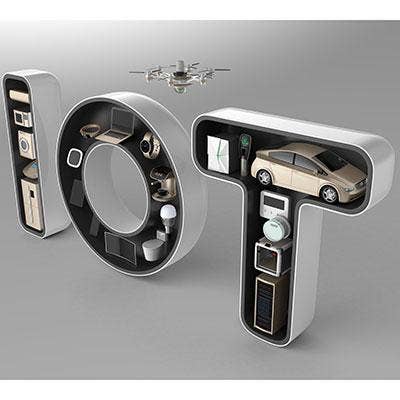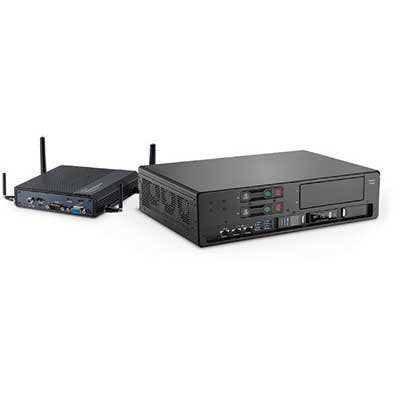Q&A: HPE Executive Tom Bradicich On New Software-Defined OT Platform And Why HPE Is A Pioneer In The IoT Market

HPE's Next Step In IoT
HPE is taking another step forward in the Internet of Things market, Tuesday unveiling the HPE Edgeline Services Platform to help manufacturers manage and control industrial connected systems and networks at the edge.
The HPE Edgeline Services Platform is a software foundation that enables partners to deliver applications and services at the edge for connected operational technology devices and industrial control systems. As part of its platform, HPE is offering an array of new software-defined applications and services.
CRN talked to Dr. Tom Bradicich, vice president and general manager of servers, converged edge and IoT systems at HPE, about HPE's new efforts with IoT. Following are excerpts from the conversation.

What is HPE's Internet of Things strategy, and why is the edge such a critical part of that strategy?
There are many edges, of which the IoT has the celebrity status. The definition of the edge is it's not the data center. Anytime we go out of the data center you go to all these edges, and we like to look at it with the three C's – connectivity, compute and control.
That's what happens at the edge – you obviously connect, so we have amazing products under the Aruba brand to make those connections. We have computing at the edge that we're pioneering in many ways and, as we move to control systems, that’s the reason why you do something at the edge. You can actuate, control and take action. At the end of the day, the customer wants to take an action – maybe in the industrial world it's controlling a robotic arm. As you move out towards the 'things' in IoT at the edge, you get closer to actuating them, controlling them and taking an action on them.

What is HPE is doing with operational technology as part of its Internet of Things strategy?
We're doing two things in the operational technology [OT] world – we're shifting IT, like compute and storage, out to the edge in that world … for the reasons of high-performance computing and faster insights. It increases reliability so you don't have to go all the way to the cloud. There's a lot of reasons to not send the data to the data center and instead compute at the edge. That's one of two things we're doing – the second thing is we're converging with OT. We're pioneering the convergence of OT and IT.

How are you pushing convergence at the edge with operational technology?
As we continue in the world of shifting out enterprise computing to the Edgeline and converging OT with Edgeline, our convergence is in two dimensions.
The first is a convergence of hardware – that's control systems and data acquisition systems with our partner National Instruments. They sell control systems, industrial networks and data acquisition systems. We put that hardware inside the same box as our servers, storage and remote system management. Now we've kicked it up a notch … we've taken it to the next level. We have Edgeline branded software… it will run in the form of an open application on Edgeline, and the software, since it's x86, it can run on anyone's server. However, we optimize it for Edgeline servers.

You recently announced the Edgeline Services platform – how will this position HPE to succeed in the IoT market?
The Edgeline services platform is a foundation that runs as a service platform. This can help aggregate the data and have open plug-ins where other services can run. This will run on the edge – primarily Edgeline but on other x86 systems or devices as well.
We also have a new category of software-defined OT. We're taking things that are [primarily] out in the OT world … and we're software defining them and removing the proprietary hardware that the customer has to have to do that function. We're writing an app and running it on the Edgeline.
Converging everything is so valuable for us … we're asking what's out there that we can converge on this very robust platform. That's the idea of software-defined.

You are offering two new apps as part of the software-defined OT category – what benefits will the apps bring for customers?
We're offering the address translation app, which eliminates the need for a piece of hardware that does that translation – we're doing it on an open x86 platform called the Edgeline Converged edge system. The word 'convergence' is a synonym for integration, so we're integrating OT onto it. That translates many different addresses in many different protocols – when you go out to the edge, you have so many networks.
We also have the data aggregation app, and a lot of the data is collected by PLCs [programmable logic controllers] – they do the control. The data comes in and is aggregated somewhere, on a piece of hardware usually, and that hardware has now been software-defined, so we don't need that anymore in the solution.
We're working with a large beverage manufacturer to do this. They are what I would call our 'inspiration customer.' They're working with the Edgeline systems to eliminate those things and devices out there.

Talk about HPE's recently announced EdgeLine Innovation Network, a formalized network for ISVs, customers and partners.
We're working with an amazing ecosystem that includes both IT vendors and OT vendors, like Microsoft and GE. We finally formalized the program. They collaborate to build with our Edgeline-based solutions that will leverage the Edgeline hardware, the converged OT and the software-defined OT to build solutions and appliances. We formalized the name, we have this network.
The hardware and software is available for companies like GE to add their Predix software or Microsoft to add their Azure IoT software. The other value we offer is free engineering development services to help develop appliances. We also have our IoT innovation labs that partners can come use and understand how connected solutions work.

What kind of competition are you seeing in terms of converged edge systems?
We don't follow trends, we set trends. When you're a trend-setter you're out in the front. When it comes to a converged edge systems, we are the sole advocates of that market. I suspect that we'll have competition, but our goal is to set the trend and stay ahead. One of our steps ahead is this software-defined OT announcement, and we'll have more in the future.
You have to be much more open and broad, to cast the net very widely, with these opportunities that are coming up with traditional IT collaborators like Microsoft and SAP, traditional OT collaborators like GE, and then these emerging vendors like startups. So we're very broad in our partnerships and engagements with other companies.